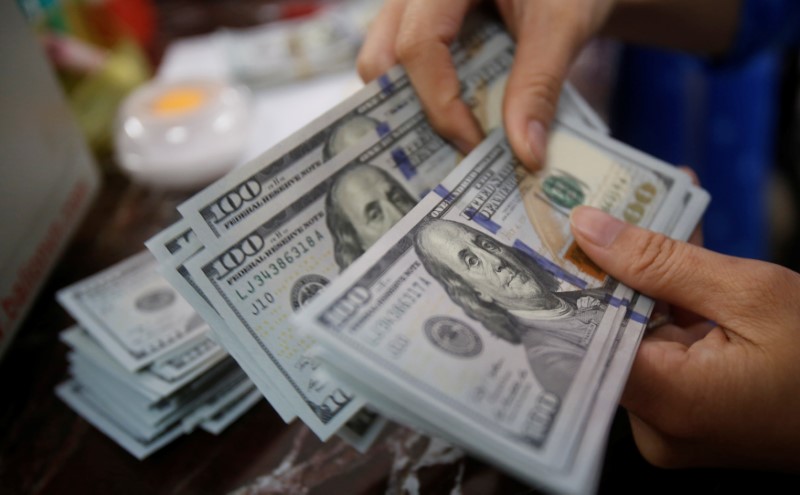Forex
Dollar retreats ahead of key payrolls data


© Reuters.
Investing.com – The U.S. dollar retreated in early European hours Friday, but is still on course for small gains this week after robust labor data, with the monthly payrolls report still to come, raised the prospect of higher-for-longer Federal Reserve interest rates.
At 03:55 ET (07:55 GMT), the , which tracks the greenback against a basket of six other currencies, traded 0.2% lower to 102.710 but is still on track to record a small gain this week having climbed above 103 during the previous session.
Nonfarm payrolls due later
Data released Thursday showed that surged in June in the biggest rise since February 2022, while the number of Americans filing for unemployment benefits rose moderately last week.
These data releases point to a resilient labor market, which has managed to withstand a year-long aggressive tightening cycle, suggesting that the can continue to raise interest rates to get fully on top of elevated prices.
Additionally, the Treasury yield, which typically reflects near-term interest rate expectations, traded near 5%, having surged to a 16-year high of 5.12% on Thursday.
The focus now will switch to the widely watched monthly nonfarm payrolls release, for further clues as to the Fed policymakers’ intentions later this month.
This is expected to show increased by 225,000 jobs last month after rising 339,000 in May and 294,000 in April.
German industrial production weakens
edged lower to 1.0886, after fell 0.2% on the month in May, indicating that the industrial sector in the eurozone’s largest economy and manufacturing powerhouse continues to struggle.
Yet, the has signaled that another increase in interest rates later this month is virtually a done deal as it battles to get on top of elevated .
“We suspect the pair is facing some downside risks in the latter part of the year after the FOMC minutes set the bar quite high for data to convince markets to price out Fed rate hikes,” said analysts at ING, in a note.
Yen in demand as safe haven
fell 0.4% to 143.47, with the yen in demand as a safe haven after the strong U.S. labor data pointed to more aggressive tightening, weighing on the global growth outlook and this risk sentiment.
Elsewhere, edged lower to 1.2738, retreating from a two-week high of 1.2780 on Thursday, with the set to also raise interest rates as U.K. remains the highest in the developed world.
rose 0.1% to 0.6628, while fell 0.1% to 7.2446, with the yuan boosted by a series of strong midpoint fixes by the People’s Bank of China.

 Forex3 years ago
Forex3 years agoForex Today: the dollar is gaining strength amid gloomy sentiment at the start of the Fed’s week

 Forex3 years ago
Forex3 years agoUnbiased review of Pocket Option broker

 Forex3 years ago
Forex3 years agoDollar to pound sterling exchange rate today: Pound plummeted to its lowest since 1985

 Forex3 years ago
Forex3 years agoHow is the Australian dollar doing today?

 Cryptocurrency3 years ago
Cryptocurrency3 years agoWhat happened in the crypto market – current events today

 World3 years ago
World3 years agoWhy are modern video games an art form?

 Commodities3 years ago
Commodities3 years agoCopper continues to fall in price on expectations of lower demand in China

 Economy3 years ago
Economy3 years agoCrude oil tankers double in price due to EU anti-Russian sanctions





















